 Over the past few decades, scientists around the world have been working to develop an ambitious new type of device called a quantum computer. And, this week, they took a step closer to that goal.
Over the past few decades, scientists around the world have been working to develop an ambitious new type of device called a quantum computer. And, this week, they took a step closer to that goal.
Compared to normal computers, these quantum computers — first theorized in the 1980s, and still in development — would operate based on an entirely different set of physical laws known as quantum mechanics. In theory, quantum computers could be extremely powerful, capable of solving problems that normal computers still can’t.
A pair of papers published on April 9 in the journal Nature showed that scientists have made important progress in developing these devices. Using lasers to control a single rubidium atom, they created a new kind of quantum connection between the atom and a photon of light. This tiny device — 1,000 times thinner than a human hair — could someday serve as a component of an unhackable quantum communications system.
Confused about what that all might mean? You’re in the right place. Here’s a very basic introduction to quantum computing:
What is quantum mechanics, anyway?
Most objects we can see follow the laws of classical physics, which is what we normally observe on a day-to-day basis. And those objects are all made up of an incredibly large number of atoms (a single grain of sand, for instance, contains about 22,000,000,000,000,000,000 atoms).
AT THE ATOMIC SCALE, NATURE FOLLOWS RULES COMPLETELY DIFFERENT THAN WHAT WE’RE USED TO
But when we look at individual atoms, “nature follows rules that are completely different than what we’re used to,” says Scott Aaronson, an MIT computer scientist who researches and blogs about quantum computing.
These rules are the weird laws of quantum mechanics. You can’t observe this sort of strange behavior on your own, because when you look at all those quadrillions of atoms together at the same time, the weirdness averages out — we just see a handful of sand, rather than all the weird things that each of those quadrillions of atoms in each grain of sand are doing.
What’s so weird about this quantum behavior?
A bunch of things. Among them, the most important to know are:
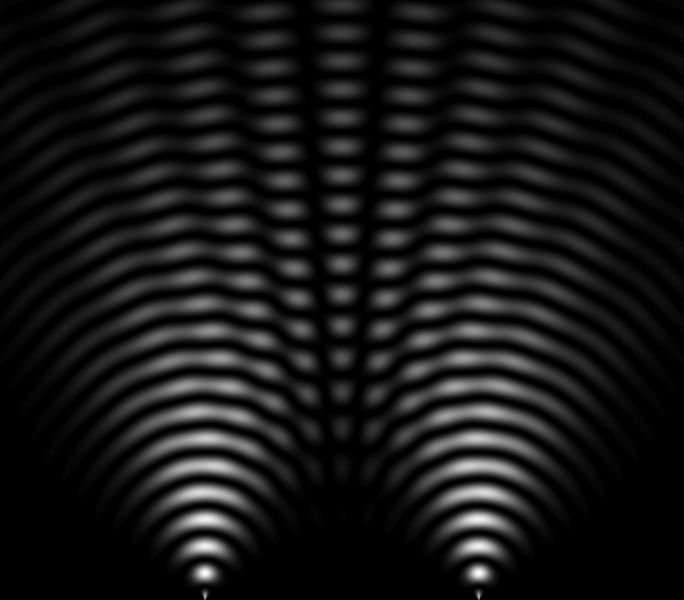
1) Superposition: This is the ability of atoms and other tiny particles to exist in two different states at once. For instance, a photon — the particle that makes up light — can travel in a horizontally-oriented wave and a vertically-oriented wave at the exact same time.
Here’s the weird part, though: If scientists try to measure the photon’s direction, however, the photon will only appear to be moving in only one direction or the other at any moment — never both.
2) Entanglement: Entanglement means that in certain circumstances the states of two tiny particles can become correlated. Even though they’re not in physical contact, a change in the state of one particle (say, the orientation of a photon’s wave) can affect the state of another photon.
3) Interference: In some cases, particles can cancel each other out in unexpected ways. One illustration is a classic physics experiment called the double-slit experiment. In it, two laser beams (made up of photons), are shot through thin slits in a metal plate and land on a screen behind it. In certain places, two photons shot through the slits can collide and cancel each other out, leading to some blank spots on the screen in which no photons land.
What does all this have to do with computers?
Normal computers rely on classical physics.
A computer’s circuit is basically a network of gates that allow electricity to flow (or not flow) through different wires. The presence or absence of electricity in any given location is called a bit, and is represented simply either as a 0 or a 1. The precise combination of 0’s and 1’s that flow through the circuit serves as the data for the computer’s calculations.
A conventional computer’s circuit, in which electricity flows through gates (called transistors). John Morris
A quantum computer would instead rely on “qubits” — particles that shift their state based on the weird rules of quantum mechanics.
A qubit could be any number of things. It could be a photon, moving in a wave that’s oriented horizontally or vertically. Or it could be an atom with a nucleus that’s spinning either clockwise or counter-clockwise. The important thing is that the qubit needs to be a particle that’s subject to the strange laws of quantum physics, and has two different forms, which are coded as 0 and 1.
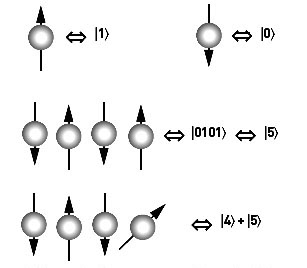
Because of the rules of quantum physics, these qubits could in fact be both 0 and 1 at the same time. A quantum computer would involve multiple qubits that are functionally linked together — with the state of one qubit affecting the state of other qubits. A practical quantum computer would be built out of thousands or millions of these qubits all linked together.
Because of the uncertainty built into the state of each qubit at any given time, this would generate a massive combination of 0’s and 1’s — much more massive than any normal computer is capable of. Each combination would produce interference and entanglement between different sets of qubits, leading to dramatically larger sets of data that can be held within the system.
The system is probabilistic — so the computer users would need to keep “checking” the qubits over and over, which would eventually get them closer to the correct answer.When the user of the quantum computer goes to “check” on the status of the qubits, however, they would only appear to be 0s or 1s. (Remember, superposition can’t be observed.) So the qubits would effectively be processing problems among themselves, and when the computer user went to check on them, they’d give an answer.
Graphic right: In a normal computer (top row),a given bit can only take one of two forms.
In quantum computer (bottom two rows),
it can take many forms at once,
leading to a vastly larger number
of combinations.
What would this quantum computer physically look like?
A quantum computer could take a number of different forms, but the new setup described in one of today’s Nature papers is a good example.
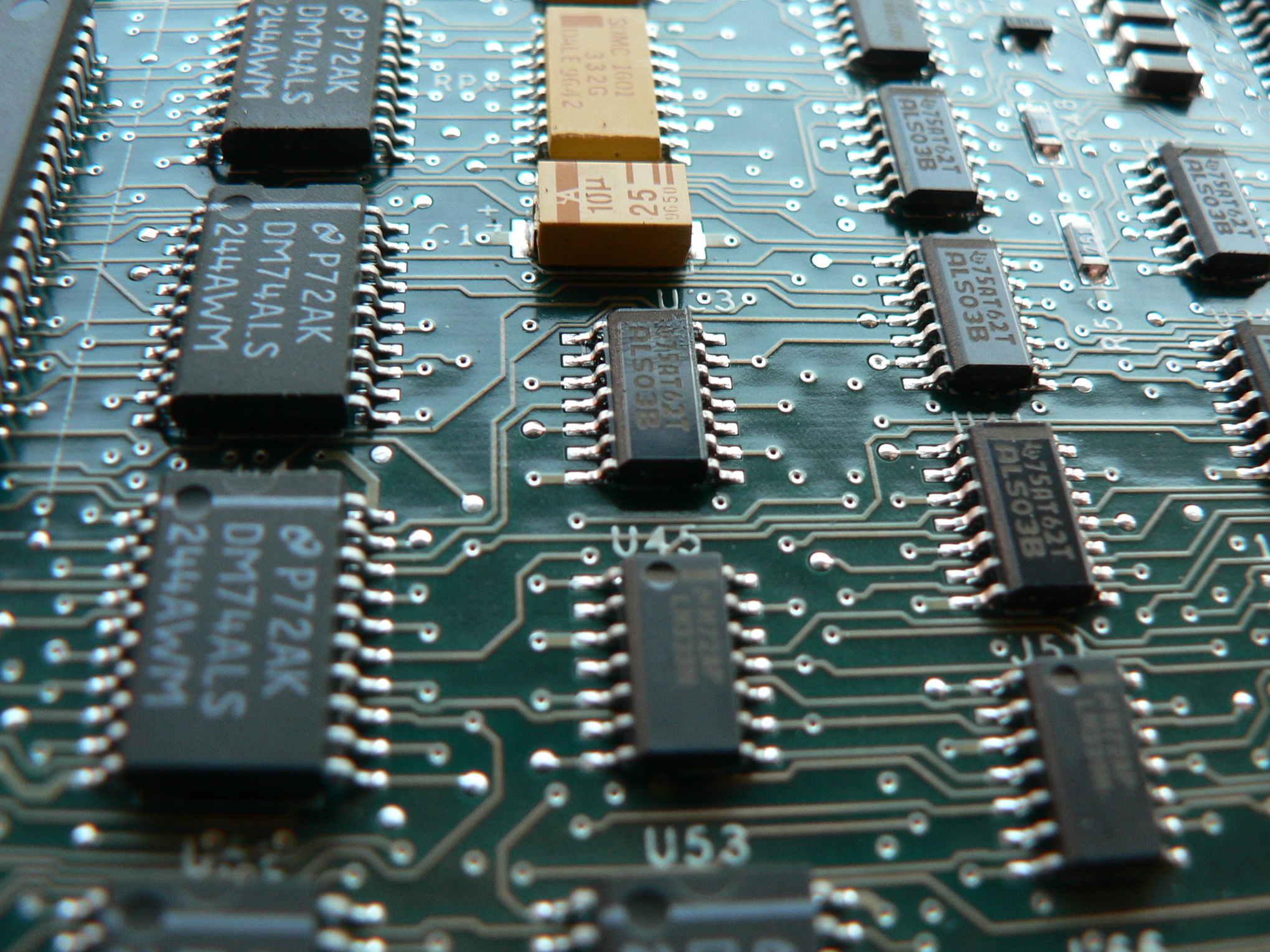
THIS WOULD GENERATE A HUGE AMOUNT OF COMBINATIONS, VASTLY LARGER THAN ANY NORMAL COMPUTER’S
Researchers from Harvard created a system in which an individual photon of light is shot through a piece of optical fiber into a box that’s been emptied of nearly all atoms, except for a single rubidium atom placed on a chip. If the photon has a certain wavelength and the atom has a certain spin state, the collision of the two will cause the rubidium atom to shift into a different spin state.
“The circuit is set up so that the spin state of the atom controls whether further light that comes in is transmitted or reflected back out,” says Jeff Thompson, one of the paper’s lead authors. “So sometime later, when we send in more photons, which way they go depends on what the first photon did.”
A computer built around this setup could code subsequent photons that were transmitted as 0’s, and reflected photons as 1’s. But because that first interaction of photon and atom was defined by quantum mechanics — and so was subject to weird things like superposition — in reality it’d be both 0 and 1, providing different outcomes over time based on the moment the system checks for a reading. As a result, this system represents a series of qubits linked together in a primitive quantum computer.

The vacuum chamber where the quantum interactions take place, with the optical fiber (red) visible at the center of the photo. Jeff Thompson
So have scientists built a quantum computer?
Not exactly. The new setup is the latest in which a few qubits are linked together, but the thousands of linked qubits necessary for a true quantum computer are still a ways off.
Why is it taking so long? “The real problem is scaling up,” Scott Aaronson says. “Qubits are very, very fragile.” It’s easy for the weird quantum behavior of an individual particle to get drowned out — by random particles nearby, or by heat energy radiating through a room. A stray atom in the Harvard team’s box, for instance, could prevent the photon-atom interaction from occurring correctly.
To counteract this problem, scientists need to very carefully insulate qubits, generally cooling them almost down to absolute zero (the Harvard setup comes within 1/1000th of a degree of it). Even when they do so, the qubits they’ve made so far can only be accurately observed for brief periods of time.
A company called D-Wave has gotten lots of attention for developing and selling what it calls quantum computers to Google and the NSA, among other customers. According to Aaronson, though, their products are more of a hybrid: high-powered conventional computers that may have some quantum tendencies, rather than true quantum computers.
What would be the point of making a quantum computer?
“Hopefully, they’ll be able to solve some specific problems a lot faster than we know how to solve them today,” Aaronson says.
The most obvious application, at the moment, is in the field of cryptography, which is concerned with keeping your digital information secure. Generally, when you want to send a piece of sensitive information over the internet — say, your credit card number — a retail website will send your computer an extremely long number (around 600 digits or more) that is the result of two prime numbers multiplied together. Your computer will then use this number to scramble your credit card number up, so that any random people who may be intercepting your transmissions won’t be able to read it.
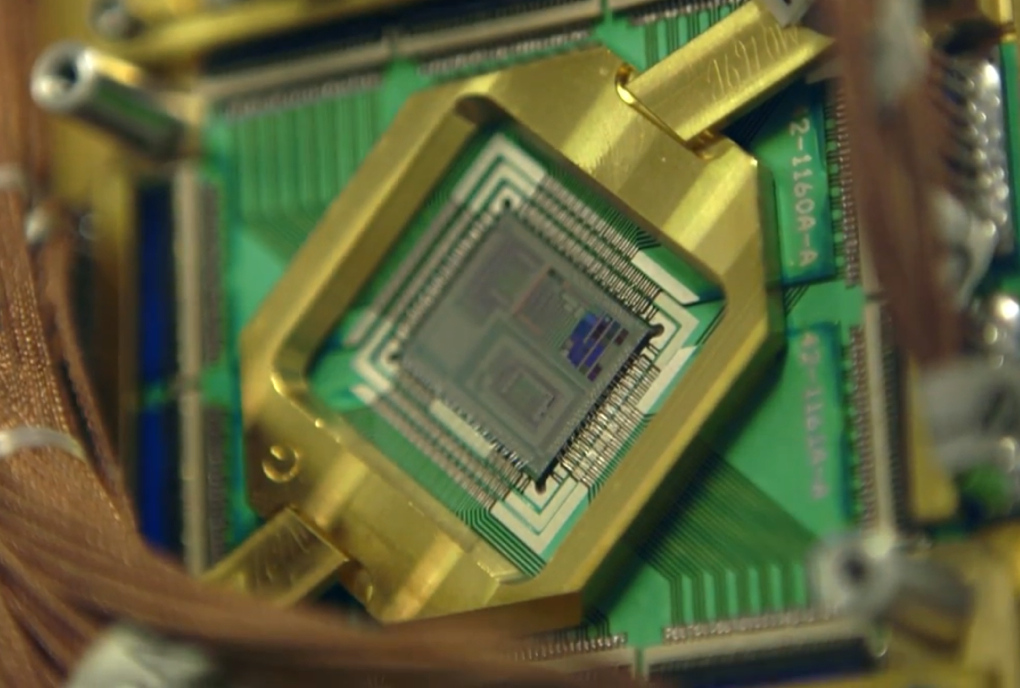
Anyone who wanted to unscramble the credit card number would have to know what those two prime numbers are. The retail website knows what they are, so they can figure out your number. No one else knows the two primes, though, so they can’t do it — and factoring a huge number into two primes happens to be a really difficult math problem that’s impossible for any normal computer to solve in a reasonable about of time.
Because of the vast number of different combinations of qubits, though, a quantum computer would be ableto run through the calculations necessary to complete this task much more quickly. In 2012, a UC Santa Barbara quantum computer made up of four qubits factored the number 15 (its factors are 3 and 5). This may not be a particularly impressive feat, but it’s proof of the principle that larger quantum computers could factor much longer numbers, and thereby crack online encryption techniques. This is the reason the NSA, for instance, is trying to build a quantum computer.
Of course, if everyone knew there were quantum computers out there capable of doing this, programmers would use different methods of encrypting information. Still, in the short term, this is the main application people get excited about.
But the power of quantum computers could theoretically be applied to all sorts of problems — anything from writing a mathematical proof to simulating the behavior of things small enough to be subject to quantum mechanics, such as individual atoms in viruses. Because photons can be sent extremely long distances overfiber optics, the most progress has been made in using quantum techniques to develop ultra-secure communications systems. The new qubit format described in today’s Nature papers could useful in advancing this field.





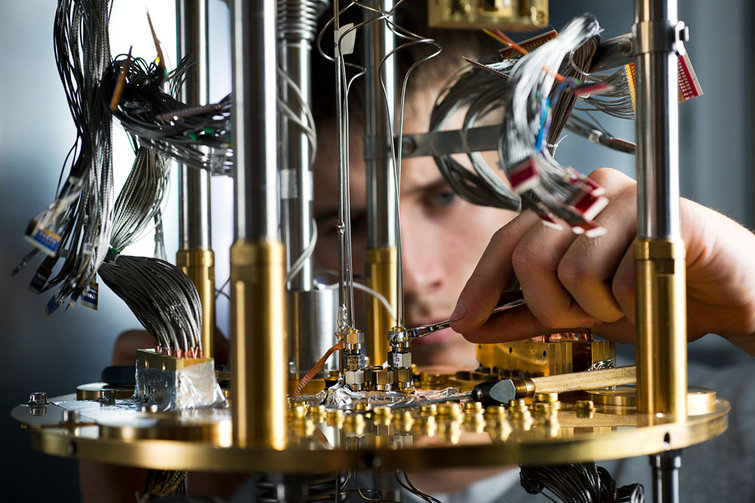
5 Comments on “Scientists are getting closer to a quantum computer — here’s why it matters”
Can we draw any inferences between what we observe in Quantum Mechanics and Neuroplasticity? and can QM explain why certain thoughts strike us with repeated regularity? Can QM guide us how to develop ability to mentally precipitate into reality, from among st several probabilities?
since light is pulsed/planked from the atom at the speed f light. I believe that it orbits the nucleus at faster and faster speed until it reaches the speed of light and then I ejects as a photon at the speed of light.. this concept has an application to quantum mechanics and gravity.
it is important that we fully develop our humanity. our humanity provides for fetus infant childhood adolescence adulthood angelhood and even godhood. .. let me explain angelhood when we reach adulthood we have greater freedom then the previous level of adolescence . adulthood is when we a individual can work produce and provide for ourselves out immediate family an friends. but this caring is a function of caring for ourselves. it is our family our friends our car our job our house etc.. at angelhood we care more for others then for ourselves.. in that we have lived through adulthood and come to hold respect for ourselves we now live at a level of maturity that we find satisfaction in caring for others with no expectations of personal reward… it is a time when we realize the we are upheld when we uphold all those around us.. “we are no higher the smallest” of any within our sphere of existence.. so we are servers, we are stewards . godhood is when we know and live as though we are indeed one with all that is.. the great wonder is that at full human maturity we are living in god’s presence….
How close are we to developing this quantum computer? And would it be able to predict the probabilities of traveling through the cosmos for example? the problems of g the problems of global warming and hunger here on earth? How far can this quantum computer go in solving these problems? Also would it be able can achieve true please peace on th can achieve true peace on this planet?
I hope that such a computer will be developed in my lifetime. I have too many questions for ASK.com to answer. Such a computer will give possible solutions to any question. Infinite possibilities in an infinite number of realities; striving to become a fully actualized human being is my full time occupation. A quantum computer, I think, would help in this endeavor.
I fear that if such knowledge is not forthcoming, our species will be lost. Human evolution appears to be stuck in quicksand.